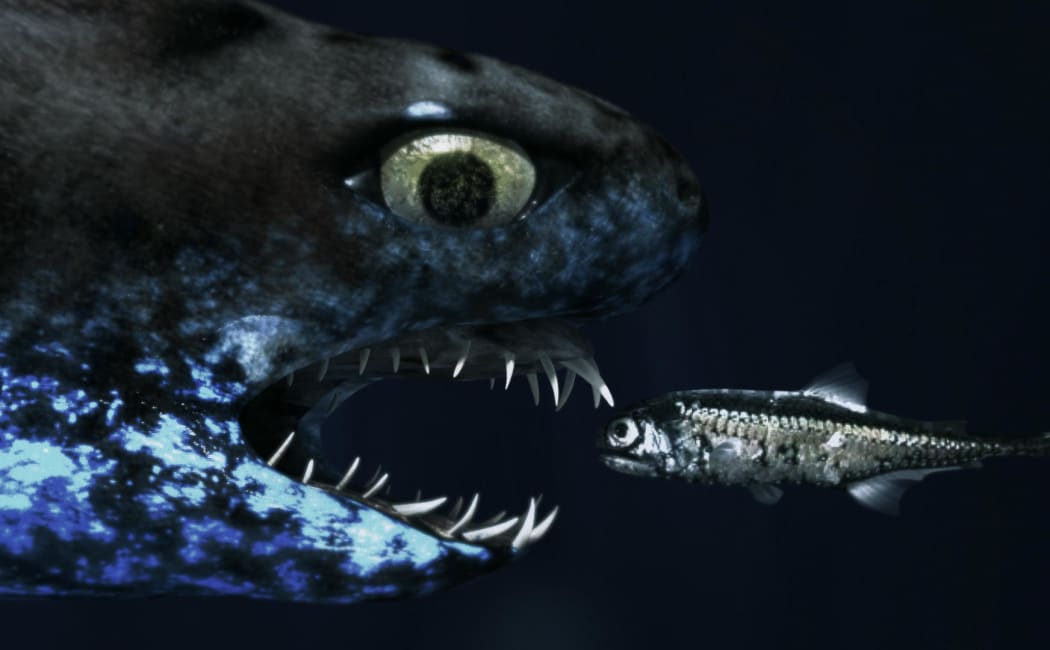Glow-in-the-Dark Shark and Ghost Crab Discovered in Australia’s Deep Sea

Glow-in-the-Dark Shark and Ghost Crab Discovered in Australia’s Deep Sea
By Blogentia | Updated: October 22, 2025
In a fascinating breakthrough for marine biology, researchers from the Commonwealth Scientific and Industrial Research Organisation (CSIRO) have discovered two remarkable new species in the depths of Australia’s ocean — a glow-in-the-dark shark and a pearl-white ghost crab. These findings highlight how little we still know about the mysterious life thriving beneath the sea.
A Deep Dive into the Unknown
The discovery took place during CSIRO’s ongoing deep-sea exploration mission at the Australian Marine Park, an ambitious project that began in 2022. So far, the mission has unveiled over 20 previously unknown marine species, adding to Australia’s reputation as one of the world’s richest biodiversity hotspots.
Among the newly catalogued creatures are the Carnarvon flapjack octopus, sea star sharks, and a scorpionfish. Yet, it’s the most recent discoveries — a luminous shark and a translucent crab — that have captured scientists’ imagination and global attention.
Meet the West Australian Lantern Shark
Nicknamed the West Australian Lantern Shark, this bioluminescent species stands out for its unique ability to produce light from its own body. According to ichthyologist Dr. Will White from CSIRO, “Lantern sharks emit light through specialized organs called photophores located on their bellies and sides. This bioluminescence helps them blend into faint ocean light and attract prey.”
Measuring around 40 centimeters in length — roughly the size of a house cat — this glowing predator was discovered over 600 meters below the ocean’s surface. Its large, luminous eyes and radiant underbelly make it one of the most visually striking species ever found in Australian waters.
The Porcelain Ghost Crab — Nature’s Transparent Wonder
Equally intriguing is the Porcelain Ghost Crab, a semi-transparent crustacean found at a depth of around 122 meters below sea level. Only 1.5 centimeters long, the crab’s body shimmers like polished pearl, giving it a ghostly appearance under water.
Dr. Andrew Hosie, curator of aquatic zoology at the Western Australian Museum, explained that these crabs are filter feeders. “Instead of using claws to grab food, they use tiny hair-like structures on their mouthparts to filter plankton and microscopic nutrients from the water,” he said. This delicate feeding technique distinguishes them from most other crabs.
Australia’s Deep Sea: A Hidden World of Biodiversity
The Australian continent is considered one of the planet’s most significant biodiversity zones, home to over a million unique species. Many of these are endemic — found nowhere else on Earth. The recent CSIRO expedition focused on the Gascoyne Marine Park, located approximately 20 kilometers off the coast of Western Australia. This marine park extends from shallow 15-meter reefs to more than 5,000-meter-deep ocean trenches, offering an incredible variety of habitats.
The month-long expedition brought together scientists from various disciplines who collected hundreds of biological samples. These specimens are being analyzed to uncover more about their anatomy, evolution, and role in the marine ecosystem. The process of confirming a new species can take years, as researchers meticulously compare DNA and physical traits to known species.
Unveiling the Secrets of the Deep
While the ocean covers more than 70% of the planet, much of it remains unexplored. In Australia, vast portions of the deep sea are still uncharted, with unknown life forms waiting to be discovered. According to CSIRO researchers, these latest findings are just the beginning — they estimate that as many as 600 additional deep-sea species may still be awaiting classification.
These new discoveries not only expand our understanding of marine biodiversity but also emphasize the importance of conservation. Deep-sea environments are delicate ecosystems, often vulnerable to climate change, pollution, and industrial activities such as deep-sea mining and trawling.
Why These Discoveries Matter
Finding glowing sharks and translucent crabs isn’t just about adding new names to science books — it’s about understanding life at its most extreme. The adaptations of these creatures — light production, transparency, and specialized feeding — reveal how marine organisms survive in the pitch-black, high-pressure depths of the ocean.
As technology advances, tools like underwater drones and robotic sampling arms are giving scientists unprecedented access to these mysterious regions. Every discovery brings humanity closer to understanding the interconnected web of ocean life and how it sustains our planet.
The Future of Deep-Sea Research
The CSIRO’s mission continues, with future expeditions planned to map unexplored marine regions and document newly found life forms. Each dive offers the potential for groundbreaking discoveries that reshape our perception of life on Earth.
For now, the glow-in-the-dark shark and the pearl-white ghost crab stand as luminous symbols of what lies beneath — proof that even in the darkest corners of our oceans, nature continues to surprise and inspire.
